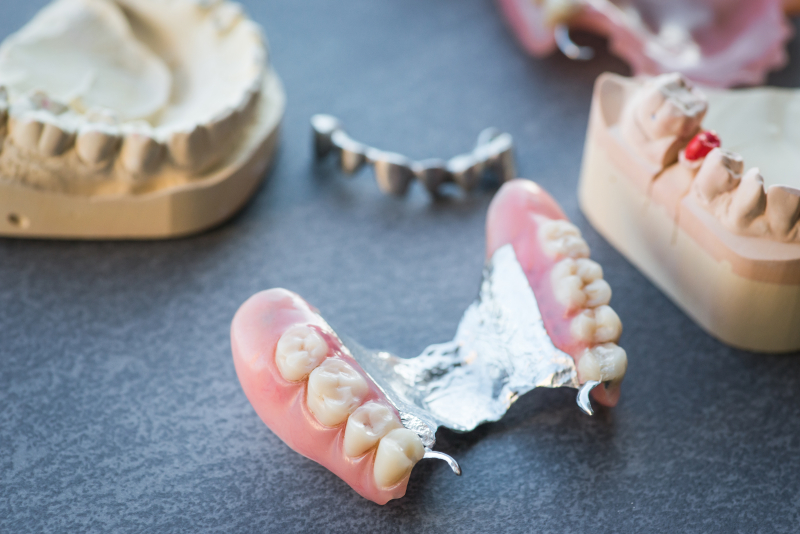Traumatic dental injuries refer to injuries or damage to the teeth, gums, or supporting structures of the mouth that result from trauma or external force. These injuries can vary in severity, ranging from minor chips or cracks in the teeth to more serious injuries such as avulsions (complete displacement of a tooth from its socket) or fractures of the jawbone. Traumatic dental injuries can occur due to various causes, including accidents, falls, sports injuries, or physical altercations.
Common Types of Traumatic Dental Injuries
- Tooth Fractures: These injuries involve cracks or breaks in the tooth structure. They can affect the crown (visible part) or the root (beneath the gumline) of the tooth.
- Tooth Dislocations: Dislocation occurs when a tooth is forced out of its normal position within the jawbone. This can result in a tooth being pushed forward, backward, or sideways.
- Tooth Avulsion: Avulsion is the complete displacement of a tooth from its socket due to trauma. Quick and proper handling is crucial to increase the chances of successfully re-implanting the avulsed tooth.
- Tooth Subluxation: Subluxation refers to a loosening of the tooth within its socket without complete displacement. It often results in pain, mobility, and bleeding from the affected tooth.
- Soft Tissue Injuries: Trauma can also cause injuries to the gums, lips, cheeks, and tongue. These injuries may include cuts, lacerations, or contusions.
The management and treatment of traumatic dental injuries depend on the type and severity of the injury.
Treatment options for traumatic dental injuries may include:
- Repairing fractured or chipped teeth using dental restorations such as fillings or crowns.
- Re-positioning and splinting of displaced teeth.
- Re-implanting avulsed teeth (if possible) and stabilizing them with splints.
- Managing soft tissue injuries with cleaning, sutures, and topical medications.
- Prescribing pain relief and antibiotics to prevent infection.
- Providing instructions for at-home care and follow-up dental appointments.
Ready to streamline your dental practice’s finances and enhance your patient care?
Explore the benefits of our expert dental billing services today.
Medical Coding Guidelines for Traumatic Dental Injuries
Coding for traumatic dental injuries is an essential part of the healthcare and dental billing process. Dental billing services help ensure accurate reimbursement for the treatment provided to patients who have suffered dental trauma. Here are some common ICD-10 codes and CDT codes used for coding traumatic dental injuries:
ICD-10 Codes for Diagnosis
Fracture of Tooth: Use codes from the S02.5x series to specify the type and location of tooth fractures. For example:
S02.51 – Fracture of crown of tooth
S02.52 – Fracture of root of tooth
S02.53 – Fracture of alveolar process of maxilla
S02.54 – Fracture of alveolar process of mandible
Dislocation of Tooth: Use codes from the S03.0x series to indicate tooth dislocation. For example:
S03.01 – Dislocation of tooth due to trauma
S03.02 – Dislocation of tooth due to dental procedure
Subluxation and Luxation of Tooth: Use codes from the S03.1x and S03.2x series for subluxation and luxation of teeth, specifying the type and location. For example:
S03.11 – Subluxation of tooth
S03.21 – Traumatic luxation of tooth, closed
S03.22 – Traumatic luxation of tooth, open
Traumatic Dental Injury, Unspecified: If the specific type of dental injury is not clearly identified, you can use code S03.3x:
S03.30 – Traumatic dental injury, unspecified
CDT Codes for Dental Procedures
Dental Evaluation and Management:
D0140 – Limited oral evaluation – problem focused
D0150 – Comprehensive oral evaluation – new or established patient
D0160 – Detailed and extensive oral evaluation – problem focused, by report
Radiographs (X-rays):
D0210 – Intraoral – complete series of radiographic images
D0220 – Intraoral – periapical first radiographic image
D0230 – Intraoral – periapical each additional radiographic image
Treatment of Dental Trauma:
D9110 – Palliative (emergency) treatment of dental pain – minor procedure
D9111 – Office visit for observation (during regularly scheduled hours) – no other procedures performed
Surgical Procedures:
D7111 – Extraction, coronal remnants – deciduous tooth
D7140 – Extraction, erupted tooth or exposed root (elevation and/or forceps removal)
Splinting Procedures:
D8610 – Orthodontic bands for traumatic injury
Here are certain steps and considerations to help guide the billing and coding process for traumatic dental injuries:
- Detailed Procedure Notes: When submitting claims, include detailed procedure notes that explain the treatment provided, including any surgical procedures, anesthesia, or other interventions. These notes should align with the chosen CPT codes.
- Insurance Verification: Verify the patient’s dental insurance coverage and eligibility for the specific procedures related to traumatic dental injuries. Ensure that the insurance plan covers the services you intend to provide.
- Submit Accurate Claims: Submit claims to the insurance company using the appropriate diagnosis and procedure codes, along with all required supporting documentation. Accuracy in claims submission is essential to avoid delays or denials. A dental billing company streamlines the practice’s financial operations, ensuring timely insurance claims submission and accurate reimbursement.
- Follow Up: Monitor the status of your claims and follow up with insurance companies if necessary to resolve any issues or expedite reimbursement.
- Patient Education: Provide patients with clear information about the billing process, including any co-pays or out-of-pocket expenses they may be responsible for. Transparent communication can help manage patient expectations.
- Coding Updates: Stay informed about any updates or changes in coding and billing guidelines related to dental trauma from relevant authorities, such as the American Dental Association (ADA) or the Centers for Medicare & Medicaid Services (CMS).
- Accurate Diagnosis: Begin by accurately diagnosing the traumatic dental injury. This may involve clinical examination, radiographs (X-rays), and documentation of the extent and nature of the injury.
- Documentation: Thoroughly document the patient’s medical and dental history, the circumstances of the injury, the affected teeth, and any associated symptoms or complications. Detailed records are essential for accurate coding and billing.
By following these steps and adhering to accurate coding and billing practices, you can ensure proper reimbursement for traumatic dental injury treatment while maintaining compliance with healthcare coding standards and regulations.
Note that the specific code selection will depend on the nature and extent of the dental injury and the procedures performed. Accurate coding is crucial for proper reimbursement and compliance with healthcare and dental coding standards. It’s important to consult with dental coding resources, such as the American Dental Association (ADA) or professional coding experts, to ensure accuracy in coding for traumatic dental injuries.






